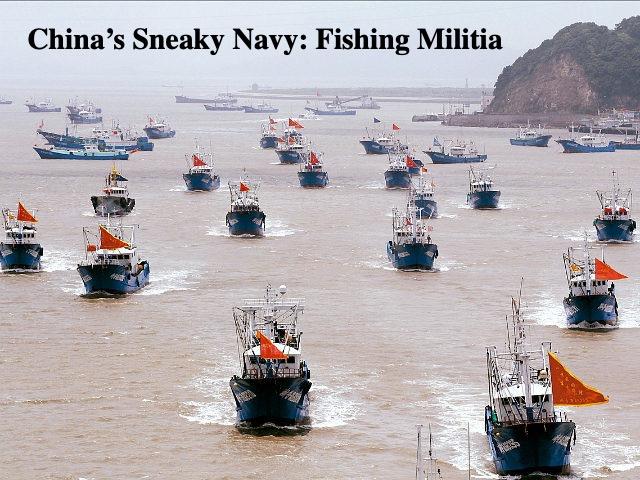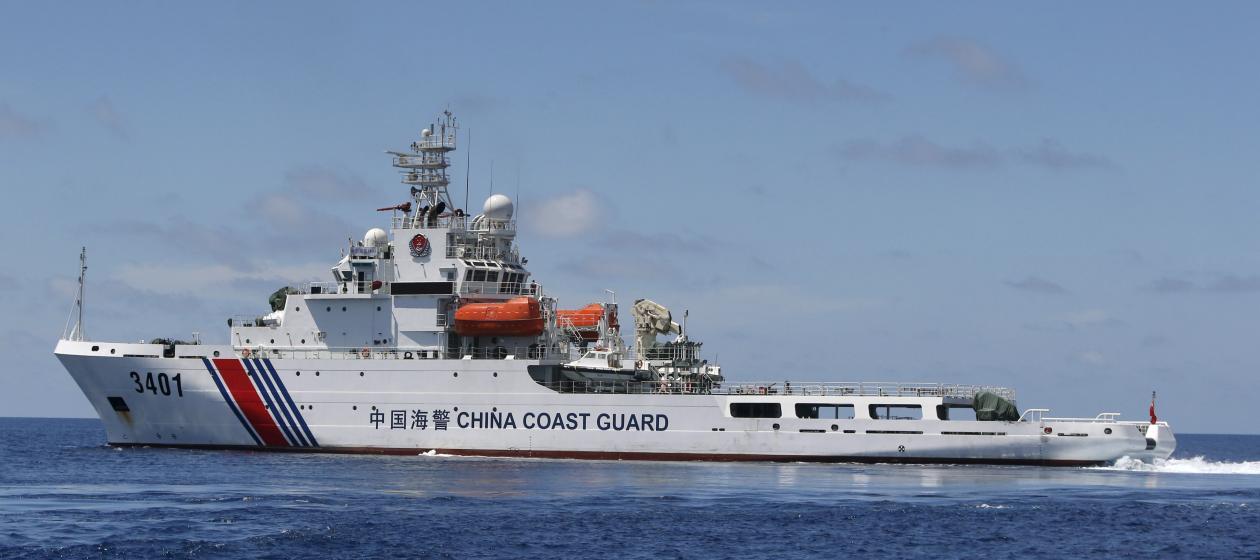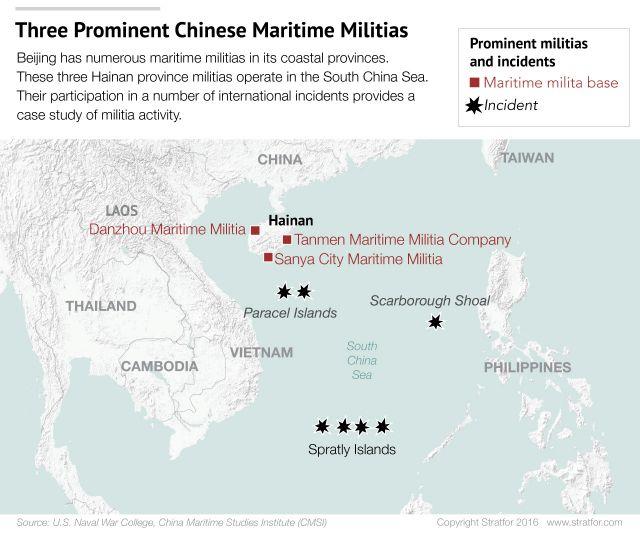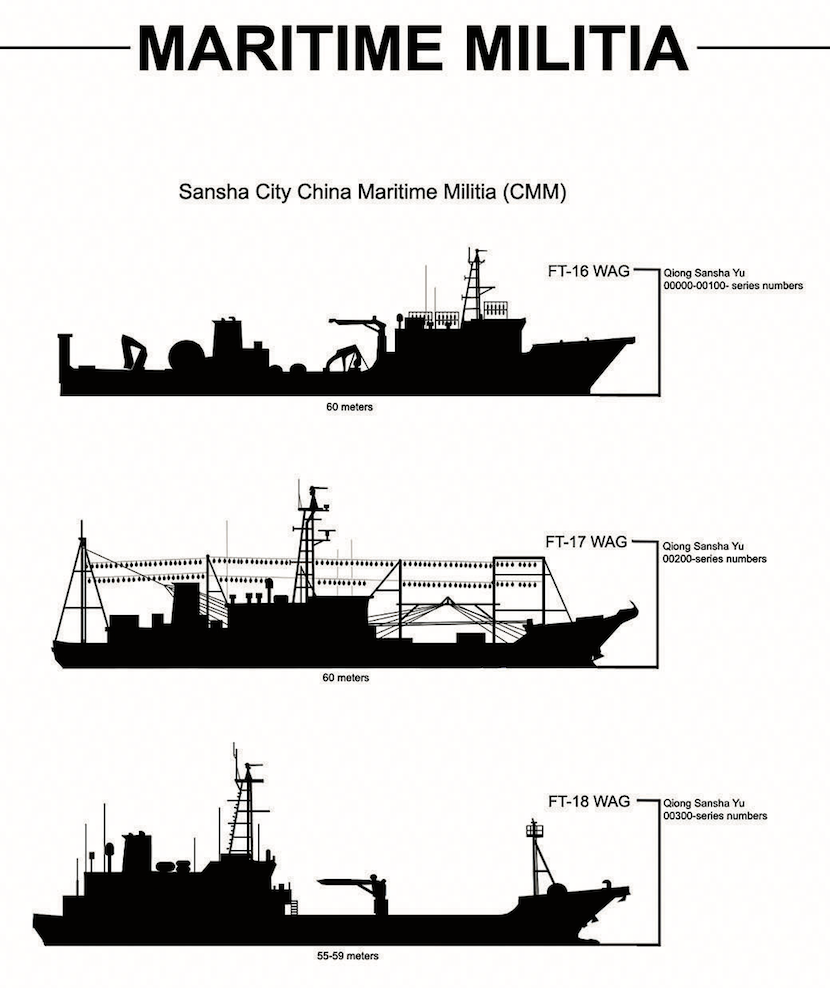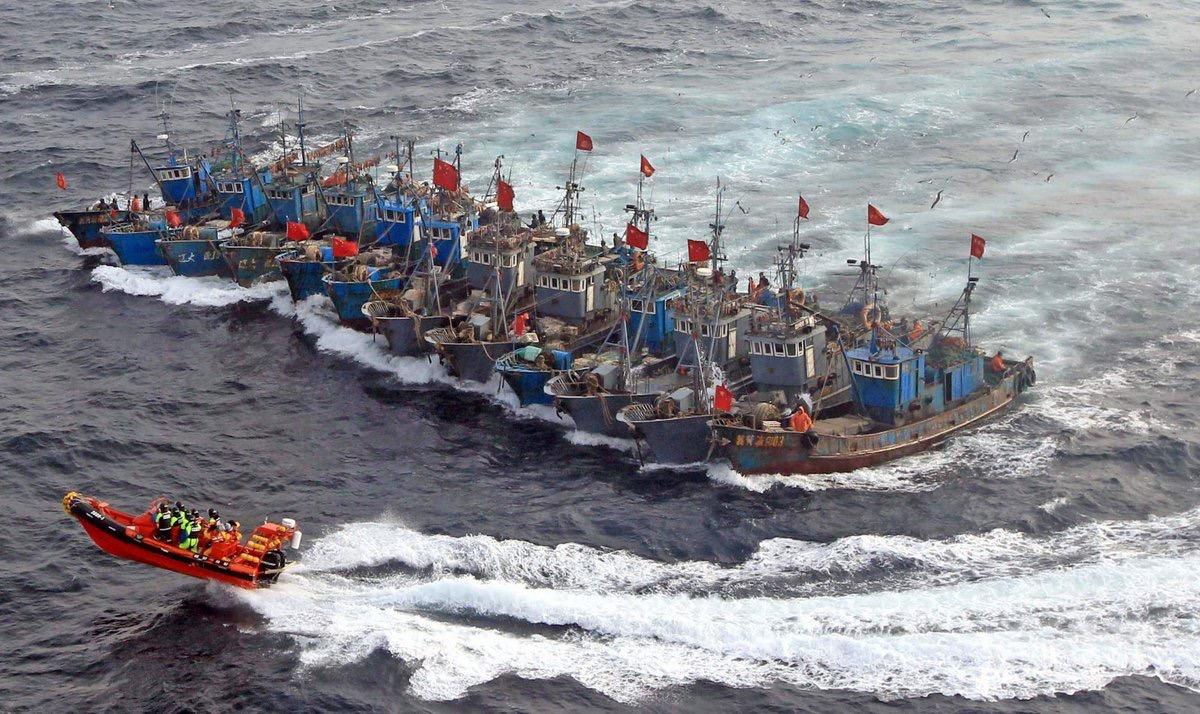Earlier this month, we reported that 275 Chinese fishing militia and Coast Guard vessels surrounded the island of Thitu in the South China Sea, which is currently being occupied by the Philippines. The US recently delivered a stern message to Beijing about its aggression in the highly disputed body of water, announcing that Chinese fishing militia and Coast Guard ships would be treated as military vessels.
Admiral John Richardson, head of the US Navy, described how he told, vice-admiral Shen Jinlon of the Chinese People’s Liberation Army Navy (PLAN), back in January, that the Trump administration would label the Coast Guard and the maritime militia as military vessels.
“I made it very clear that the US navy will not be coerced and will continue to conduct routine and lawful operations around the world, in order to protect the rights, freedoms and lawful uses of sea and airspace guaranteed to all,” Admiral Richardson told the Financial Times.
China’s Coast Guard has more than doubled its feet to over 130 ships in the last decade, making it the largest coast guard in the world. Beijing trains and provides financial subsidies to the maritime militia, an armed reserve force of civilians and fishing boats, has significantly increased in size since 2015.
In its last annual report on the PLAN, the Pentagon said the fleet “plays a major role in coercive activities to achieve China’s political goals without fighting.”
In 2H17 through 1H18, the maritime militia sailed through the East China Sea with commercial grade laser pointers — striking low-flying American warplanes with damaging beams of light.
China has more frequently deployed the maritime militia in the East and South China sea because the US Navy is likely not to respond to aggression from small fishing boats. But that seems to be coming to an end, as the latest warning from Admiral Richardson could provoke a hot conflict.
James Stavridis, a retired US admiral, said Admiral Richardson’s warning is the latest move in the Pentagon to get tough on China.
“It is a warning shot across the bow of China, in effect saying we will not tolerate ‘grey zone’ or ‘hybrid’ operations at sea,” said Stavridis. “A combatant is a combatant is the message, and the CNO (Chief of Naval Operations) is in the right place to warn China early and often.”
Bonnie Glaser, a China specialist at CSIS, a Washington-based think-tank, said: “By injecting greater uncertainty about how the US will respond to China’s grey-zone coercion, the US hopes to deter Chinese destabilizing maritime behavior, including its reliance on coast guard and maritime militia vessels to intimidate its smaller neighbors.”
The warning from Admiral Richardson also affects the Chinese Coast Guard, said Dennis Wilder, a former head of China analysis at the CIA, adding that President Xi Jinping took control of the coast guard in 2018.
“By having both the navy and the coast guard under the Central Military Commission, it improves in wartime the co-ordination and control of maritime forces,” he said. “As China’s coast guard is heavily armed, it is a logical assumption that it would be incorporated into military plans and operations.”
The US Navy has been conducting Freedom of Navigation Operations through the South China Sea, near China’s militarized islands that are considered highly contested areas. Some have warned that labeling the militia and Coast Guard vessels as military vessels would be particularly challenging.
“If the US decides to interpret maritime militia vessels as military, that will lead to increased risk,” said William Choong of the International Institute for Strategic Studies. “With US destroyers in the South China Sea and the continuing Chinese maritime militia operations there, things could go bad very quickly.”
Several weeks ago, China’s Foreign Ministry spokesman Lu Kang said he hopes “non-regional forces don’t stir up troubles in the South China Sea,” after the US Navy amphibious assault ship USS Wasp, carried an unusually large number of Lockheed Martin F-35s, sailed through the South China Sea near the Scarborough Shoal.
China has overlapping economic claims in the South China Sea with Vietnam, Taiwan, Malaysia, the Philippines, and Brunei. While territory disputes remain unsolved, the region remains a flashpoint for the next conflict between the US and China.
via ZeroHedge News http://bit.ly/2XTI3Wf Tyler Durden
